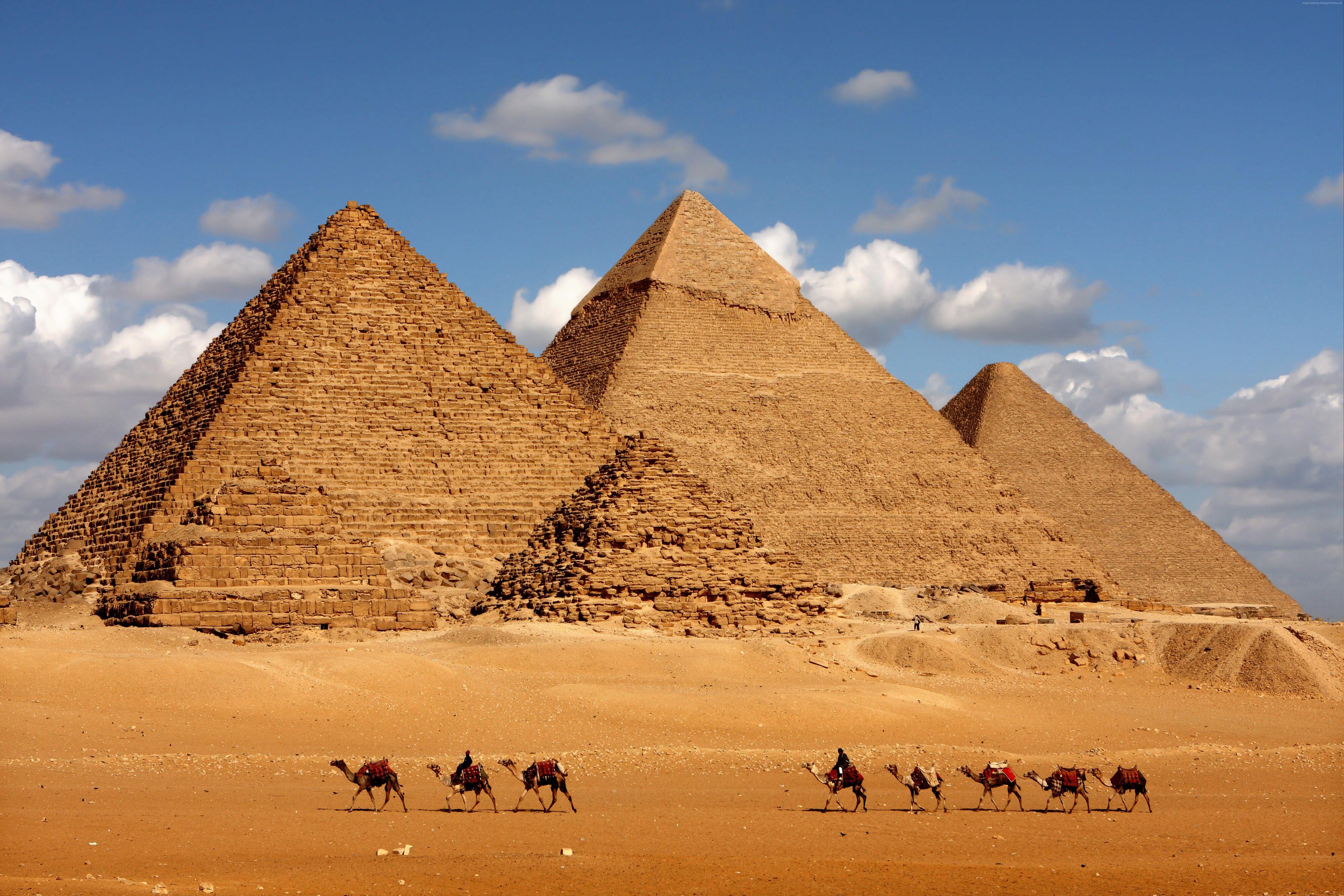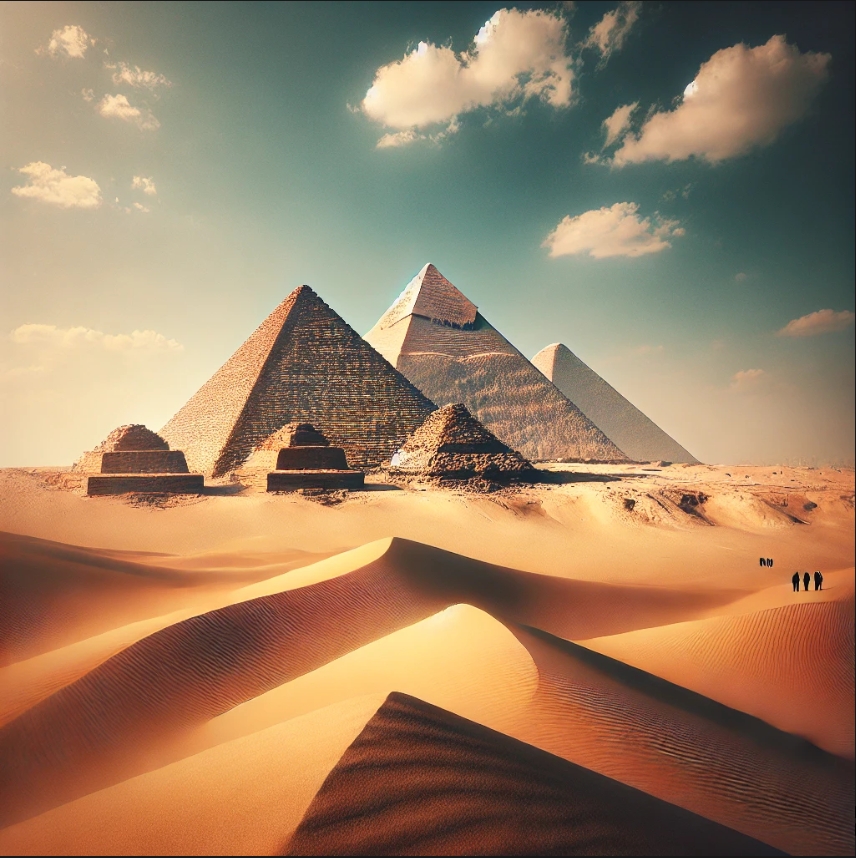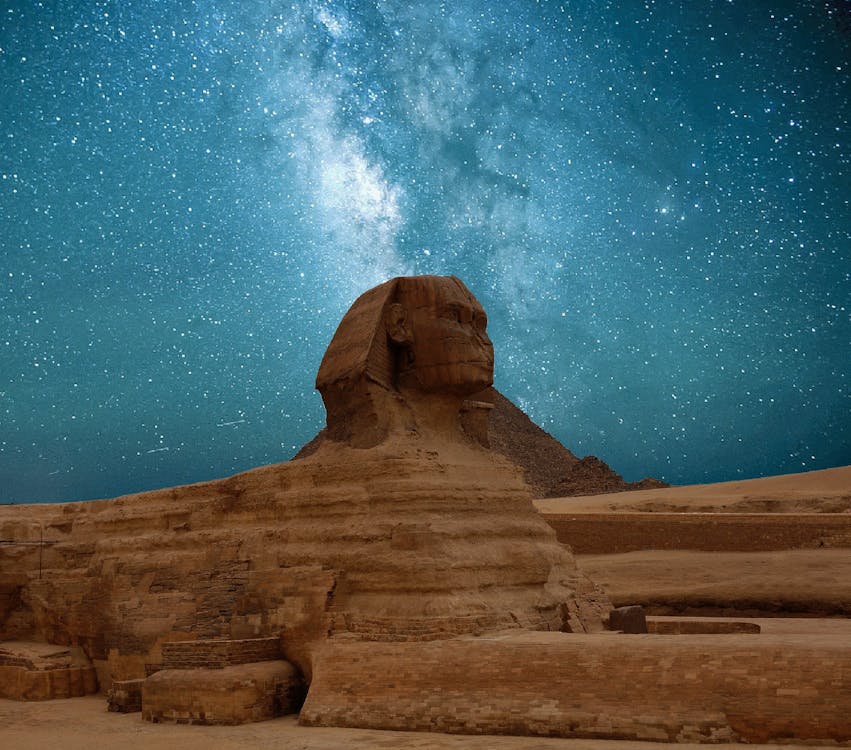A classic Tour around Egypt during 6 days
4.0/5
100% of guests recommend
Duration
6 Days
Tour Type
Packages
Group Size
48 persons
Location
Giza
Overview
Day 1: Cairo
- Morning:
- Giza Pyramids & Sphinx: Begin your day by visiting the iconic Great Pyramid of Giza, Pyramid of Khafre, Pyramid of Menkaure, and the Sphinx.
- Optionally, you can take a camel ride around the pyramids for a fun experience and unique photos.
- Lunch: Enjoy Egyptian cuisine at a local restaurant. A traditional dish like Koshary or Fattah is a great choice.
Afternoon:
- Egyptian Museum: Head to Tahrir Square to explore the museum, home to many ancient artifacts, including the treasures of King Tutankhamun.
- Khan El Khalili Bazaar: Explore this vibrant market in the afternoon. It’s a great place to shop for souvenirs, spices, jewelry, and more.
- Evening: Consider a Nile River cruise with dinner for a relaxing evening with views of Cairo’s skyline.
Day 2: Cairo to Abu Simbel
- Morning:
- Fly to Abu Simbel: Catch an early flight from Cairo to Abu Simbel (about 1.5 hours by air).
- Abu Simbel Temples: Spend the morning visiting the stunning Abu Simbel Temples, carved into the mountainside. The two temples—dedicated to Ramses II and Queen Nefertari—are an absolute highlight of Egypt.
- Lunch: Have lunch near the temples or at a local restaurant.
Afternoon:
- Explore more of the Abu Simbel site, take in the views, and return to Aswan in the late afternoon or early evening (approximately 3 hours by car from Abu Simbel to Aswan).
Evening:
- Arrive in Aswan, check into your hotel, and relax.
Day 3: Aswan
Morning:
- Philae Temple: Start your day by visiting the beautiful Philae Temple, dedicated to the goddess Isis, located on an island in Lake Nasser. Take a boat ride to the temple.
- Aswan High Dam: Next, visit the Aswan High Dam, an engineering marvel that controls the Nile's flooding and provides hydroelectric power.
- Lunch: Have lunch at a restaurant by the Nile River.
Afternoon:
- Unfinished Obelisk: Visit the Unfinished Obelisk, located in the granite quarries of Aswan. It’s a fascinating site to learn about ancient Egyptian stonework.
- If time allows, stroll along the Nile Corniche or visit the Nubian Museum to learn more about the history of Nubia and its culture.
Evening:
- Relax and enjoy dinner at a local restaurant with a view of the Nile.
Day 4: Aswan to Luxor
- Morning:
- Take a morning train or flight from Aswan to Luxor (approximately 3 hours by train or 1 hour by plane).
- Karnak Temple: Upon arrival in Luxor, head straight to Karnak Temple, one of the largest and most impressive temple complexes in Egypt. Explore the massive halls and giant pillars.
- Lunch: Have lunch at a restaurant near the Nile or in the Luxor city center.
Afternoon:
- Luxor Temple: Visit Luxor Temple, which is beautifully illuminated in the evening and located in the heart of the city.
- Evening: You could take a sunset felucca ride on the Nile to wind down after a day of sightseeing.
Day 5: Luxor
- Morning:
- Valley of the Kings: Visit the Valley of the Kings, where you’ll find the tombs of pharaohs like Tutankhamun, Ramses II, and Seti I. It’s an unforgettable experience to walk through these ancient burial chambers.
- Temple of Hatshepsut: Explore the grand Temple of Hatshepsut, one of Egypt’s most impressive mortuary temples, dedicated to the female pharaoh.
- Lunch: Enjoy lunch at a local restaurant.
Afternoon:
- Colossi of Memnon: Stop by the Colossi of Memnon, the giant statues of Pharaoh Amenhotep III, on your way back from the Valley of the Kings.
- If you have time, consider visiting the Luxor Museum, which has a great collection of artifacts.
- Evening: You might want to stroll along the Luxor Corniche or relax by the hotel.
Day 6: Luxor to Giza
Morning:
- Take an early morning train from Luxor to Cairo (approximately 9 hours by train).
- Upon arrival in Cairo, Return back to you home
Included/Excluded
All accommodation of the trip
Domestic flight
Pick up and drop off at the airport
All transfers by vehicle
Entrance fees
Tour Guide
Beverages
Optional activities
Everything is not mentioned in the itinerary
Tips
Itinerary
Giza Plateau
Giza Plateau
The Giza Plateau is one of the most famous archaeological sites in the world, located just outside Cairo, Egypt. It's home to the Giza Pyramids, which were built during the 4th Dynasty of the Old Kingdom of Ancient Egypt (around 2580-2560 BCE). These pyramids were built as tombs for the Pharaohs and were part of a larger complex designed for royal burial and religious rituals.
Abu Simbel
Abu Simbel
Abu Simbel is one of the most iconic archaeological sites in Egypt, located in the southern part of the country, near the border with Sudan. It consists of two massive rock temples built by the Pharaoh Ramses II (also known as Ramses the Great) in the 13th century BCE, during the 19th Dynasty of the New Kingdom. These temples are among the most remarkable and well-preserved monuments of ancient Egypt.
Unfinished Obelisk
Unfinished Obelisk
The Unfinished Obelisk is one of the most intriguing and impressive archaeological sites in Egypt, located in the northern part of Aswan, near the ancient quarries. This massive obelisk provides insight into the techniques used by ancient Egyptian workers to carve obelisks and serves as a fascinating example of unfinished monumental projects from the Pharaonic era.
Valley of the Kings
Valley of the Kings
The Valley of the Kings is one of the most famous archaeological sites in Egypt, located on the west bank of the Nile River, near the modern city of Luxor. It is the final resting place for many of Egypt’s most powerful Pharaohs and high-ranking nobles from the New Kingdom (circa 1550–1070 BCE). The Valley of the Kings is renowned for its incredible tombs, intricate wall paintings, and the rich burial treasures that were found inside these tombs.
Travel Styles
Cultural
Nature & Adventure
Activities
Special Interest
Historical
Flight
Boat
Tour Location
Reviews
4.0/5
Very Good
Based on
1 review
Excellent
0
Very Good
1
Average
0
Poor
0
Terrible
0
Koriva Haneul
05/05/2025 09:36
인생 여행이었어요
친절하고 일정도 완전 최고였어요
Showing 1 - 1 of 1 total
from
0$
Tour Start Date
{{ start_date_html }}
Tour End Date
{{ end_date_html }}
Last Booking Date
{{ last_booking_date_html }}
{{start_date_html}}
{{type.desc}}
{{type.display_price}} per person
Extra prices:
({{type.price_type}})
{{type.price_html}}
Discounts:
{{type.from}} - {{type.to}} guests
from {{type.from}} guests
- {{ formatMoney(type.total) }}
({{type.price_type}})
{{ type.price }}%
{{ formatMoney(type.price) }}
- {{total_price_html}}
- {{pay_now_price_html}}
from
0$






